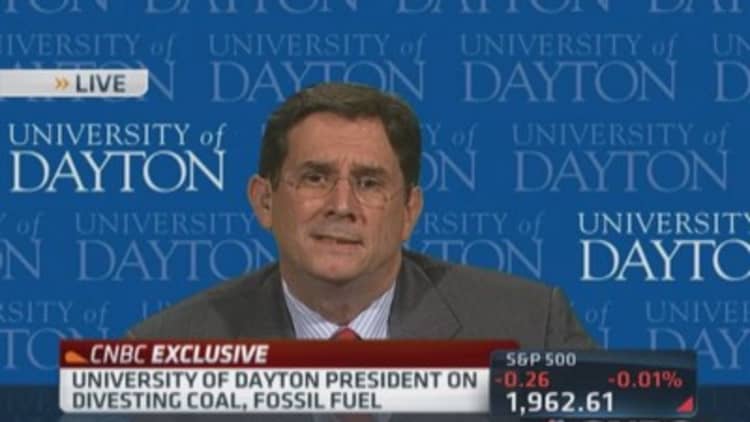New Environmental Protection Agency rules governing power plants didn't explicitly promote the use of alternative energy. But alternative energy is a big winner anyway.
Renewable energy advocates view the EPA action as a bullish development. By granting states wide latitude to reduce carbon output, the latest changes provide hidden incentives to use anything other than coal—meaning alternative energy is poised to benefit, even if by default.
The EPA's efforts to reduce greenhouse gases—broadly upheld in a decision this week from the Supreme Court—didn't give an overt blessing to alternative fuel sources like solar or nuclear.
Yet many proponents of carbon-friendly energy sources believe the EPA's guidelines mean alternative energy emerges stronger. The new regulations come against a backdrop of sharply higher demand for renewable energy, and a nuclear sector that's trying hard to win over skeptics and bring in new converts.
Read MoreWhat 'war on coal' The carbon fuel is doing fine
"The plan says do whatever you need to do to reduce emissions. That is a heavily embedded incentive to use everything but coal," said Melissa Carey, deputy director of clean energy at Third Way. "The rule doesn't target coal, it targets lower emissions. Anything that's better than coal has a greater value now."

At least one prominent environmentalist thinks the EPA should have thrown more overt support behind alternative energy sources.
"The EPA plan picks a loser: coal. It does not, however, pick winners among the low-carbon options available," wrote Mark Cooper, a senior research fellow at the Institute for Energy and the Environment at Vermont Law School.
A win-win for solar?
The White House has made addressing climate change a centerpiece of its policy agenda. Simultaneously, low-emissions energy in general—and solar power in particular—has seen a large influx of private capital in recent years, a hallmark of a maturing industry that is less reliant on government support.
Read More A day in the sun: Solar's revival sends stocks on a tear
U.S. demand for alternative energy is on the rise, even as renewable initiatives falter abroad. In a report on power infrastructure, the Federal Energy Regulatory Commission recently noted that alternative energy—including biofuels and hydropower—accounted for 88 percent of newly installed electric generating capacity in the U.S. for the month of May.
Moves by the EPA will help renewable energy industries even more, advocates say.
Read MoreMain Street braces for weather Armageddon
"There's no question that EPA's proposed new air-quality standards for power plants will expand the use of solar nationwide, but it's still way too early to tell by how much," said Ken Johnson, a spokesman for the Solar Energy Industries Association, in response to an inquiry from CNBC.
'Game-changing'
"Utilities that have had one foot in the water over the past four or five years are going to ramp up their use of solar because they have a familiarity and comfort level with it," Johnson said. "But other utilities will quickly come to learn that solar makes a lot of sense for them, too."
Industry participants told CNBC that renewables win even if they're ignored.
"Focusing on this at all is game-changing for us," said Bennett Fisher, co-founder and CEO of Retroficiency, an energy efficiency company that works with energy companies and utilities.
—By CNBC's Javier David.





